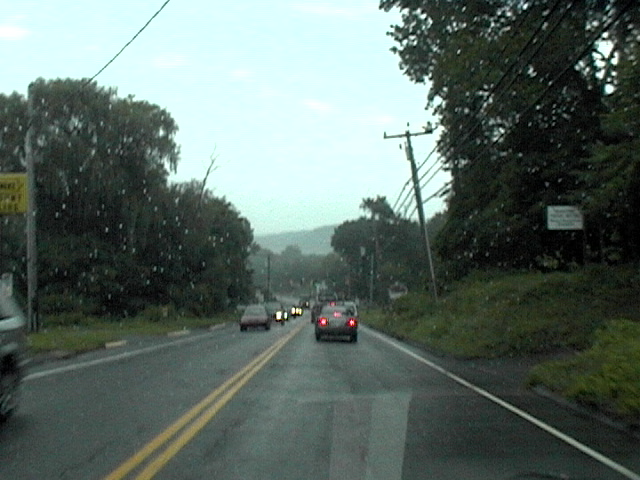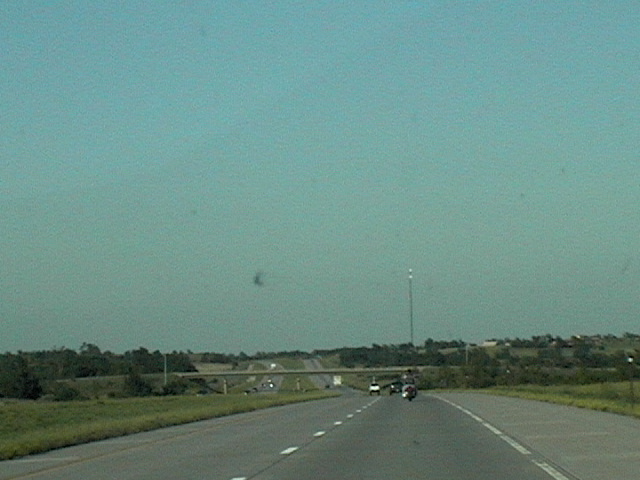|
|
 |
 |
|
Work to Start on Brookfield Bypass
In a press release on April 27, 2007, the Connecticut Department of Transportation announced that construction of the Brookfield
Bypass will begin on Monday, April 30, 2007. Motorists should expect lane closures at the present expressway terminus at
Route 202 just south of Brookfield Center as crews construct the pavement that will connect the Bypass to the existing highway.
More States Look to Public-Private
Partnerships to Build Expressways
We all know one of the main issues preventing construction of Super 7 between Norwalk and Danbury is a lack
of state and federal funding. This is not just a local problem, but a problem on a national scale. While increasing
traffic creates demand for new expressways throughout America, there's barely enough state and federal money to maintain the
existing infrastructure. Faced with this reality, state highway officials are now looking at operating their roads through
public-private partnerships, or P3 deals. The way it works is simple: a private firm funds the design and
construction of the expressway. Following its construction, the firm operates and maintains the road, including collecting
tolls to repay creditors for the road's construction. Additionally, proceeds frol toll collections pay
for maintenance and operation of the highway, and future captial projects as necessary. Throughout the entire P3 deal,
the State retains ownership of the road. Such deals are already underway (and successful) in Florida, Texas, and Illinois.
By June 30, 2006, Indiana will join these states with its leasing of the Indiana East-West Toll Road to a joint-venture between
Cintras and Macquarie Infrastructure Group. Indiana plans to use a similar agreement to construct 117 miles of Interstate
69 between Indianapolis and Evansville. If P3 arrangements work in these states, a public-private partnership will be
a huge success for completing Route 7 between Norwalk and Danbury.

|
 |
|

SITE UPDATE: The first 4-lane section of Route 7 in New Milford was completed in August 2004 between lanesville
Road and Pickett District Road. Work continues from Pickett District Road to the Route 7/202 split at Veterans Bridge.
LEGISLATOR PROPOSES SELLING RT 7 LAND
Rep Toni Boucher, R-Wilton recently proposed legislation requiring ConnDOT to sell land acquired in the 1960s for Route 7.
She argues that "overwhelming opposition will prevent the highway from being built."
So here's the real question: If 85-90 percent of citizens residing in the Route 7 corridor support completing the expressway
between Norwalk and New Milford, where is this so-called "overwhelming opposition?"
It can be concluded that this "opposition" comes from a small Elitist group residing along Route 7 that have the money to
sway politicians and court judges in their favor on the issue. And those who suffer are thousands of commuters and working-class
people who spend hours in Route 7 gridlock each day.
I wonder what billionaires in Wilton paid off Ms. Boucher to make such a statement. Probably the same ones that bought her
seat in General Assembly.
The first step in completing Route 7 is reigning in the corrupt tactics opponents have been using to stall this project for
the past 50 years. Highway opponents have bought their way into Wilton's Town Hall since Super 7 was first proposed, creating
a perception of opposition.
Let's turn this...

|
| Gridlocked 2-lane Route 7 |
...into this!

|
| Smooth, free-flowing traffic on Super-7 |

Vermont Had the Right Idea...
Of the three states (Connecticut, Massachusetts and Vermont) through which Route 7 passes, Vermont had completed most of its
portion of the original proposed Route 7 expressway. Interstate 89 accounts for 43 miles from Burlington to the Canadian
border. Of the 65 miles of Route 7 between Rutland and the Massachusetts border, 40 miles are expressway, with an additional
11 miles under construction between Bennington and the Massachusetts border. Plans are underway to complete the remaining
17 miles between Manchester and Rutland.
Contrary to belief by opponents, completion of the expressway in Vermont around 1980 did not lead to explosive residential
and retail development they fered would happen. In fact, town centers bypassed by the expressway were preserved and have
become tourist attractions.
In contrast, the greatest retail and residential development has occurred in areas where the expressway was not built--particulary
in Massachusetts, plans for the Route 7 expressway were dead before they made it out of the planning stages. Southwest Connecticut
is experiencing its greatest retail and residential development on the non-expressway segments on Route 7 in New Milford and
from Wilton to southern Danbury.
|
|
|
|
 |
|

The Route 7 Survey Results As of April 27, 2007..."
According to our survey results, 87 percent support the construction of an expressway between Norwalk and New Milford (most
of those surveyed live in the Route 7 corridor). So where's the big opposition and why are our elected officials listening
to a small, self-interested minority of the population opposed to an expressway and ignoring the majority of citizens...who
support Super 7?
Click Here to Take the Route 7 Survey!
This site explains why an expressway is the ONLY real solution to the near constant state of gridlock we
face on the existing Route 7, and why environmentalists and local opponents are wrong in favoring frivalous attempts to resolve
the problem without constructing the expressway.
Route 7 Toll Expressway:
Construction of Route 7 as a toll road between Norwalk
and Danbury is a viable option, since the toll revenues would pay for construction costs and maintenance. To ease the fear
of the horrors experienced on the Connecticut Turnpike (I-95) prior to the removal of its tolls in 1985, a new automated system
should be installed which requires no toll booths and has no impact on the flow of traffic. This technology is already being
used on toll roads in Canada.
There is no north-south highway linking Danbury and the shoreline. All traffic that moves between Interstate 84 and shoreline
cities, like Norwalk, Bridgeport, and New Haven currently must go through downtown Danbury, Route 7, Route 25, or Route 34.
Because of the rapid growth Danbury is experiencing, the city's roads are becoming gridlocked. It is not uncommon to wait
20 minutes to get through a single traffic light. Routes 25 and 34 are also severely congested routes. Heavy tractor-trailer
trucks use these roads to get from I-84 to Bridgeport and New Haven. That leaves Route 7, which for nearly 50 years was planned
to be bypassed by an expressway. An expressway that should have been completed 30 years ago.
Expressway opponents
favor upgrading rail and mass transit services in the Route 7 corridor, but they fail to realize that these improvements will
be as costly as constructing an expressway while have a limited effect on the Route 7 gridlock.
The Connecticut DOT
favors widening the existing Route 7 to 4 lanes. This will make the road like Route 1 in Milford or Route 44 in Avon and West
Hartford. THESE ROADS ARE NOT SAFE!
It is time for the opposition to realize that they cannot stop progress. Widening
the existing Route 7 is not progress. In fact, it is going backwards. The only result from widening will be additional traffic
lights, large retail outlets like K-Mart and Walmart and fast-food restaurants, while an expressway will provide a safe alternative
that will not disrupt town centers along the existing Route 7.
Upgrading Danbury Rail Line to Cost $2 Billion
According to a Conntecticut Department of Transportation study, the cost of upgrading the rail line between
South Norwalk and Danbury is expected to cost taxpayers upwards of $2 billion (Danbury News-Times--11 Mar 2004). That would
be double the high-estimate amount of $1 billion to complete the Route 7 expressway from Gristmill Road in Norwalk and Danbury
Airport. An expressway would cost half of upgrading the Danbury Line and construction costs could be recovered by tolls.

"Super 7: Norwalk to Danbury by 2015!"
|
|
|
|
|
|